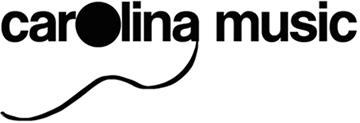|
Rhythm is one of the three main elements in music – melody/tune and harmony being the other two. Children from a very early age can respond to rhythmic stimulus by moving in time with a piece of music or song they hear. Indeed, toddlers often experiment with rhythm as they realise that banging toys together, or hitting them on the floor, can make wonderful noises.
We can all create simple rhythms with our body sounds such as clapping hands, slapping knees, stamping feet and clicking fingers. These are the ideal starting point for children to learn how to create and maintain a rhythmic pattern. Then they can move on to the use of simple rhythm instruments (many of which are also called unpitched instruments or untuned instruments) such as drums, maracas, castanets, wooden block (claves) and triangles. Home-made instruments can be introduced cheaply and easily. It can also be great fun putting beans or rice into empty plastic containers (such as washing–up liquid bottles) to make shakers, stretching a rubber band round a cardboard box, blowing across the top of a plastic drinks bottle or even using a couple of yoghurt pots to make ‘horse’s hoof’ sounds.
The most common rhythm patterns have two or four beats, and these are the easiest to create with body sounds and movements or with instruments.
Marching to a two-beat rhythm is entirely natural, and having left-right or up-down movement patterns repeated enables children to absorb the rhythms by simply responding to what they hear and see. With young, pre-school children especially, demonstrate large movements clearly so they are using gross motor skills because fine motor skills take more time to develop.
Three-beat rhythms can be tricky, because the ear is more naturally inclined to go with two or four beats, so it can be useful to encourage children to try three beats by doing three repeated actions such as putting their hands on their knees, shoulders and heads in succession. Then introduce a clap into the pattern of actions: knees, clap, heads. To emphasise the first beat, try slapping the knees and then clapping twice: knees, clap, clap. Using such actions, emphasise the rhythm of words in songs like The Baby Sardine by starting the rhythm first and then singing along.
When children are confident about moving in time to a song or piece of music and enjoy making their own rhythms with body sounds and actions, introduce them to using simple rhythm instruments. Encourage them to play along with songs and with instrumental music. Finally, introduce children to playing simple pitched (or tuned) instruments like chime bars which can be played with a rhythmic action to accompany a song using the chord letters in the songs here. The children will be playing the same rhythm on different instruments, helping each other to work as a team. This is the start of the orchestral concept, and will provide a firm foundation for their future singing and instrumental playing.
|



